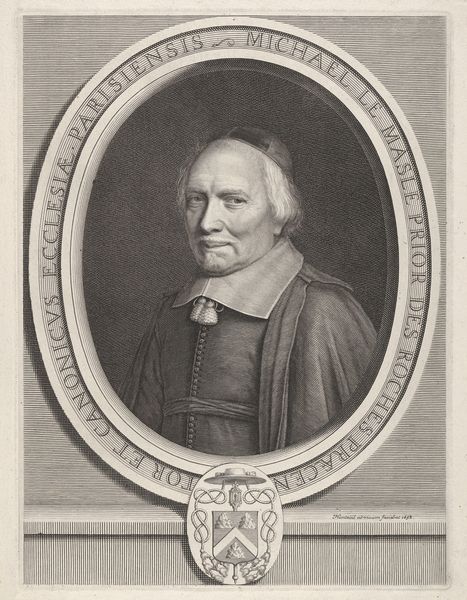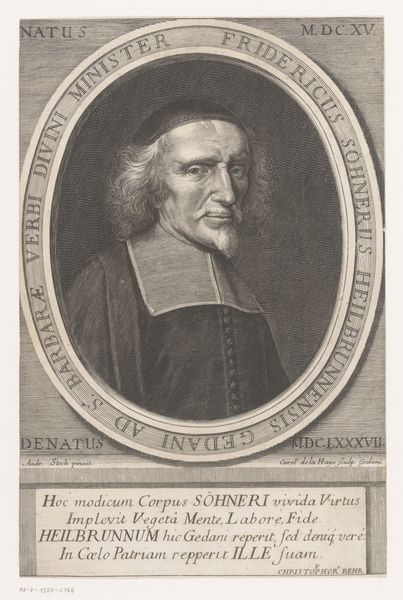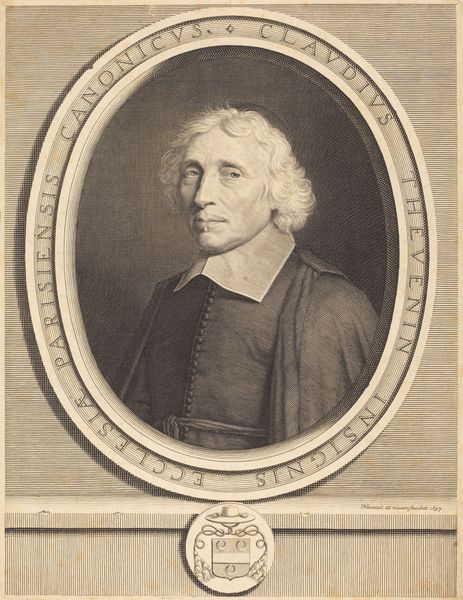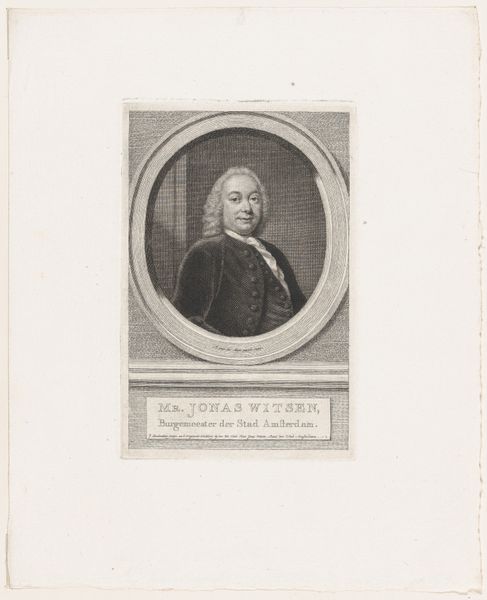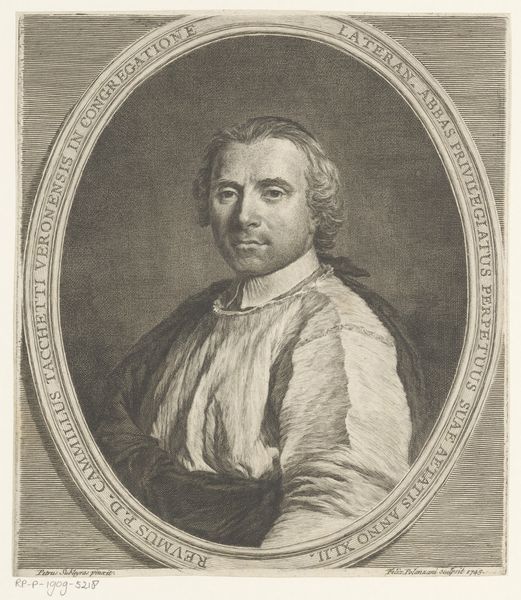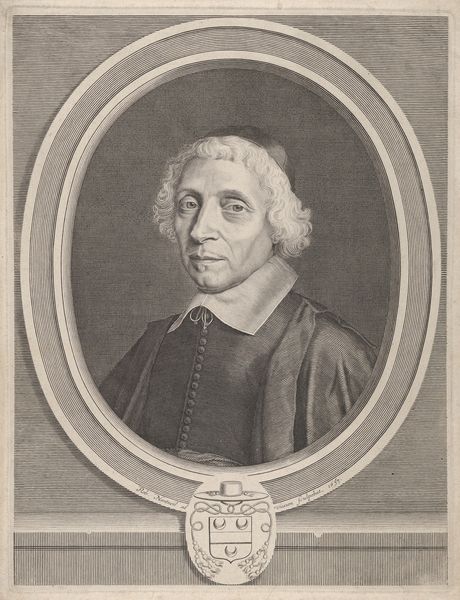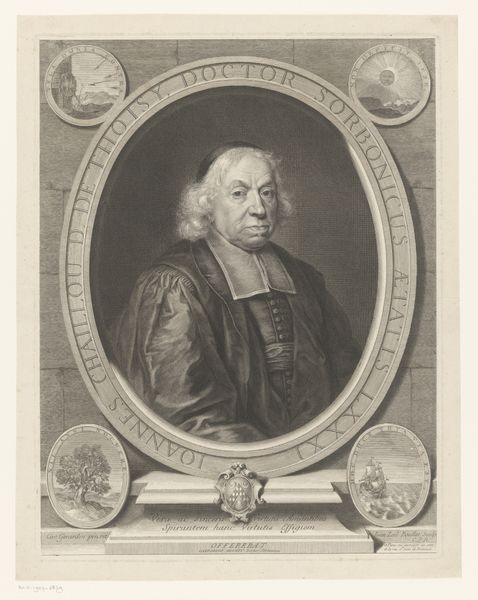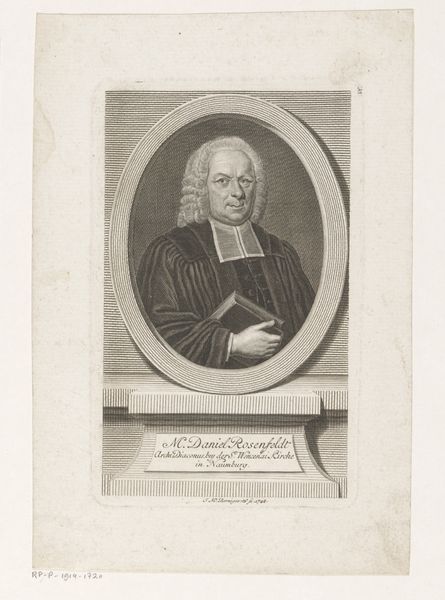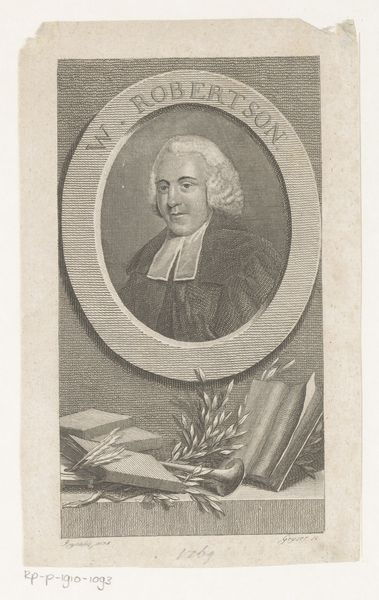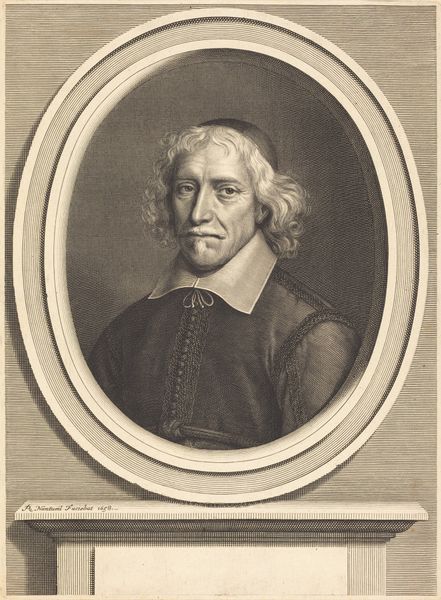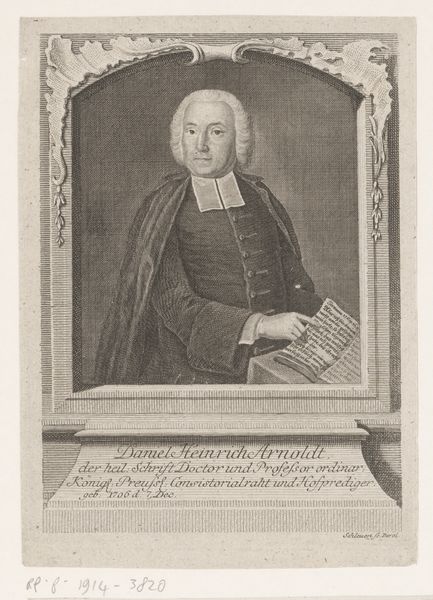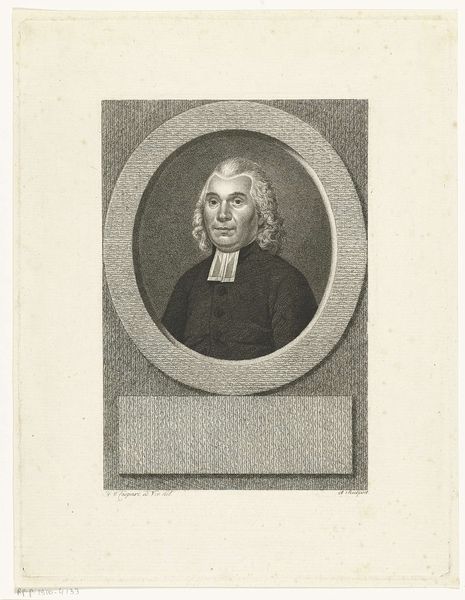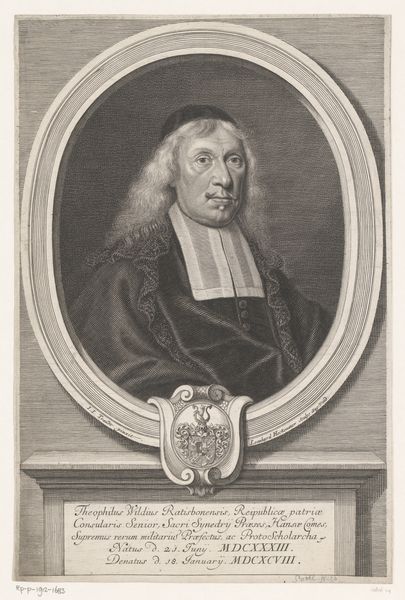
Portrait of Louis de Marchault, Prieur de Saint-Pierre d'Abbeville 1670
0:00
0:00
drawing, print
#
portrait
#
drawing
#
baroque
# print
#
history-painting
Dimensions: Plate: 14 × 10 13/16 in. (35.5 × 27.4 cm) [cropped to plate mark]
Copyright: Public Domain
Curator: Look at this print, completed around 1670. Jean Lenfant depicted Louis de Marchault, who was Prieur de Saint-Pierre d'Abbeville. You can find this fascinating piece at The Metropolitan Museum of Art. Editor: Right, I get a sense of serenity. Despite the very crisp lines typical of baroque portraiture, there's something softened in the eyes and posture. What's your take? Curator: I think that this feeling comes from the masterful technique, how he managed to convey not just the likeness, but the character of the sitter with a relatively "cold" medium, print. You're focusing only on his personality but what do you think about the formality and structure? Editor: Exactly! If you look at the composition, the oval framing feels quite rigid, but even that contributes to an overall harmony. Then, look below; the coat of arms serves as a grounding element, doesn’t it? The symbols within speak to lineage, legacy… all that historical baggage. Curator: True, and how that baggage is offset by the sensitivity and humanity that I was describing earlier. But, if we move from content to style and materials we see an exercise in contrasts. The sharpness of the etched lines, versus the softness achieved in shading around his face... I love the visual tension between the precise and the perceived. It shows how an artist’s hand can really coax feeling out of a hard medium. Editor: Definitely. Plus, there’s the text etched into the frame... quite ornate, he was definitely someone of consequence in society. In it there are listed various positions: of Machault Prieur, of Saint Peter Abbot of Villa, he was in the Supreme Senate of Paris as Counselor. Curator: Yes, the piece speaks of power, place and legacy—it whispers of who we wish to be. These portraits in a way speak more about how someone wishes to be perceived by posterity, than a cold record of a moment in time. The piece definitely transcends pure historic document. Editor: A fitting testament. Well, this portrait gave me food for thought on how history sees us versus how we see ourselves. A conversation, literally etched in time.
Comments
No comments
Be the first to comment and join the conversation on the ultimate creative platform.
